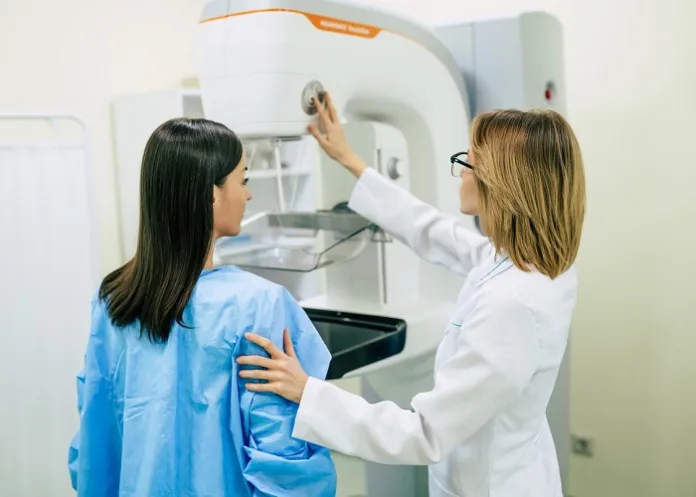A recent study has had implications for genetic breast cancer investigations and criteria for who should be offered testing, with Swedish national guidelines for the disease now being more inclusive, and offering testing to all women with triple-negative breast cancer, regardless of age.
News Medical reports that BRCA1 and BRCA2 are well-known breast cancer genes linked to a significantly increased risk of hereditary breast and ovarian cancer.
However, an additional 11 genes are associated with elevated risk for these types of cancer.
The multi-year Swedish study revealed that the proportion of women with genetically confirmed hereditary breast cancer doubled after including all of these genes in the screening test.
All cancer genetic clinics in the country participated in the research, which encompassed patients from between 2012 and 2018. In total, 4 759 individuals underwent comprehensive genetic analyses, with 4 622 women having breast cancer and/or ovarian cancer.
This represents around 85% of Swedish women investigated for suspected hereditary breast cancer (BRCA1 and BRCA2) during these years.
One aim of the study was to determine how common it is for a gene other than BRCA1 or BRCA2 to cause the disease.
“The analyses conducted were more extensive than clinical routine, and we examined thirteen genes known to be associated with elevated risk of breast and ovarian cancer to see how common these genetic changes are in a Swedish population,” said study leader Hans Ehrencrona, a researcher and associate professor in clinical genetics at Lund University and senior physician at Skåne University hospital.
“The number of women who received a genetic explanation for their breast cancer doubled through the new inclusive screening technique,” he added.
Among the 13 studied genes, several genetic variations are extremely rare, and researchers question the usefulness of including these in routine genetic tests.
At the same time, the technology of Next-Generation Sequencing (NGS) makes it easy to conduct broad analyses and include well-known genes where there is good knowledge about the risk of cancer associated with genetic variations.
The study provides knowledge that can be used in individual risk assessment, preventive measures, and treatment strategies for breast cancer patients, said the team.
It has also had implications for genetic investigations of patients, and criteria for who should be offered genetic testing have changed in the country’s national guidelines for breast cancer.
“In our study, just more than 27% of women with triple-negative breast cancer had a detectable genetic abnormality, and in this group, we often see genetic variants that can lead to targeted treatment,” said Ehrencrona.
Study details
Extended genetic analysis and tumour characteristics in over 4600 women with suspected hereditary breast and ovarian cancer
Anna Öfverholm, Therese Törngren, Hans Ehrencrona, et al.
Published in BMC Cancer on 10 August 2023
Abstract
Background
Genetic screening for pathogenic variants (PVs) in cancer predisposition genes can affect treatment strategies, risk prediction and preventive measures for patients and families. For decades, hereditary breast and ovarian cancer (HBOC) has been attributed to PVs in the genes BRCA1 and BRCA2, and more recently other rare alleles have been firmly established as associated with a high or moderate increased risk of developing breast and/or ovarian cancer. Here, we assess the genetic variation and tumor characteristics in a large cohort of women with suspected HBOC in a clinical oncogenetic setting.
Methods
Women with suspected HBOC referred from all oncogenetic clinics in Sweden over a six-year inclusion period were screened for PVs in 13 clinically relevant genes. The genetic outcome was compared with tumor characteristics and other clinical data collected from national cancer registries and hospital records.
Results
In 4622 women with breast and/or ovarian cancer the overall diagnostic yield (the proportion of women carrying at least one PV) was 16.6%. BRCA1/2 PVs were found in 8.9% of women (BRCA1 5.95% and BRCA2 2.94%) and PVs in the other breast and ovarian cancer predisposition genes in 8.2%: ATM (1.58%), BARD1 (0.45%), BRIP1 (0.43%), CDH1 (0.11%), CHEK2 (3.46%), PALB2 (0.84%), PTEN (0.02%), RAD51C (0.54%), RAD51D (0.15%), STK11 (0) and TP53 (0.56%). Thus, inclusion of the 11 genes in addition to BRCA1/2 increased diagnostic yield by 7.7%. The yield was, as expected, significantly higher in certain subgroups such as younger patients, medullary breast cancer, higher Nottingham Histologic Grade, ER-negative breast cancer, triple-negative breast cancer and high grade serous ovarian cancer. Age and tumor subtype distributions differed substantially depending on genetic finding.
Conclusions
This study contributes to understanding the clinical and genetic landscape of breast and ovarian cancer susceptibility. Extending clinical genetic screening from BRCA1 and BRCA2 to 13 established cancer predisposition genes almost doubles the diagnostic yield, which has implications for genetic counseling and clinical guidelines. The very low yield in the syndrome genes CDH1, PTEN and STK11 questions the usefulness of including these genes on routine gene panels.
See more from MedicalBrief archives:
SA team devises cost-effective gene
Test for cancer risk may reduce pre-emptive mastectomies
New study provides more precise data on gene mutations
NHS to use genetic analysis to match more cancer patients to clinical trials

